Westminster Abbey is one of London’s top attractions. There is more to a visit to Westminster Abbey than simply strolling through the church and taking some photos. In this guide, we cover what you need to know about how to visit Westminster Abbey and get the most out of your visit, including what to do when you are here, the best time of day to plan your visit, and how to skip the line.
Interesting Facts about Westminster Abbey
Westminster Abbey dates back to 960 AD, when a community of Benedictine monks lived at this site and established the first abbey.
In 1042, Edward the Confessor began to rebuild the Abbey to make it a grander, royal burial church. He was the first to be buried here in 1066. The church was enlarged again in 1245 by Henry III, into what we see today. It sustained some damage from bombings in 1914 and during WWII.
Since the coronation of William the Conqueror in 1066, every English and British Monarch (except Edward V and Edward VIII, who were never crowned), were crowned at Westminster Abbey.
King Edward’s Chair, which you will see on a visit to Westminster Abbey, has been used at every coronation since 1308.
More than 3,300 people are buried in Westminster Abbey. These include Charles Darwin, Sir Isaac Newton, Geoffrey Chaucer, Charles Dickens, Laurence Olivier, Stephen Hawking, and most of the Kings and Queens of England. Queen Elizabeth II is not buried at Westminster Abbey; she is buried in St. George’s Chapel at Windsor Castle.
Westminster Abbey has also been the site of quite a few royal weddings. The most recent royal wedding was Prince William and Kate Middleton in 2011.
On May 6, 2023, King Charles was coronated at Westminster Abbey.
Things to Do at Westminster Abbey
A visit to Westminster Abbey is more than just strolling through the church and and seeing the tombs of those who are buried here. You can also see King Edward’s chair, visit Poet’s Corner and numerous small chapels, and add on the Queen’s Diamond Jubilee Galleries (which are well worth it).
If you are visiting Westminster Abbey without taking a tour, there is an established walking route through the abbey. The audio guide leads you to everything we have listed below, with the exception of the exterior of the church. There are also signs throughout the abbey indicating the walking route.
With the exception of the exterior of Westminster Abbey, the things to see that are listed below are in order of the walking route as we did it in 2022.
You will enter through the Great North Door and walk through Westminster Abbey according the signed route.

Westminster Abbey on a snowy day in December. The doors in this photo are the Great North Doors, the visitor entrance into the Abbey.
The Exterior of Westminster Abbey
The exterior of Westminster Abbey has been renovated and refaced several times. The most recent renovation was from 1973 to 1995. New statues were added above the Great West Door, including the statue of Martin Luther King JR.

Westminster Abbey
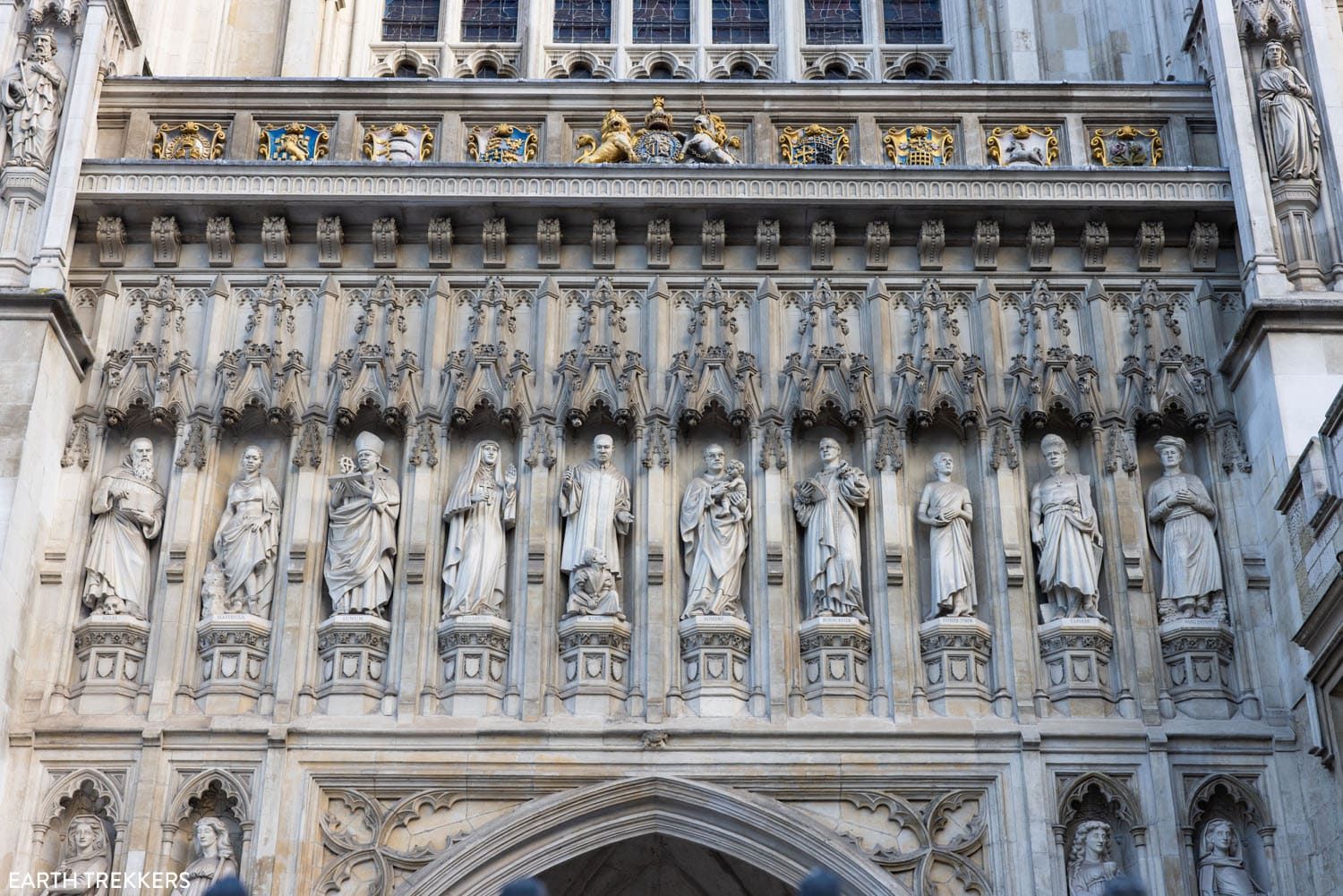
Statues above the Great West Door
Grave of Charles Darwin
After entering Westminster Abbey through the Great North Door, you will be directed to walk through the Nave towards to Great West Door. As you walk up the Nave, you will step over the burial site of Charles Darwin.

The burial site of Charles Darwin
Tomb of the Unknown Warrior
Located on the floor of the Nave, not far from the Great West Door, is the Tomb of the Unknown Warrior. In 1920, the body of an unknown British warrior was brought here from France and buried with soil from France.

Tomb of the Unknown Warrior
The Nave
From the Tomb of the Unknown Soldier, you have views along the Nave towards the Quire screen.


The Quire Screen
The Quire screen is an ornately decorated screen that you will pass through just before entering the Quire. On the left-hand side of this screen is a memorial to Sir Isaac Newton.

The Quire Screen (and a Nativity Scene at Christmas)
The Quire
The Quire is where the Westminster Abbey choir sings during choral services. Some of the stalls, or seating areas, are reserved for High Commissioners of the Commonwealth Countries when they attend services.
The quire stalls date back to 1848 and the black and white marble floor dates back to 1677.

The Quire

The High Altar and Cosmati Pavement
After walking through the Quire, you will see the High Altar Screen and Cosmati Pavement.
The Cosmati Pavement forms the floor of the high altar. It was built by Italian craftsmen in 1268 by order of Henry III. This tile floor is made up of colorful stonework and colored glass embedded in limestone called Purbeck marble.

The High Altar
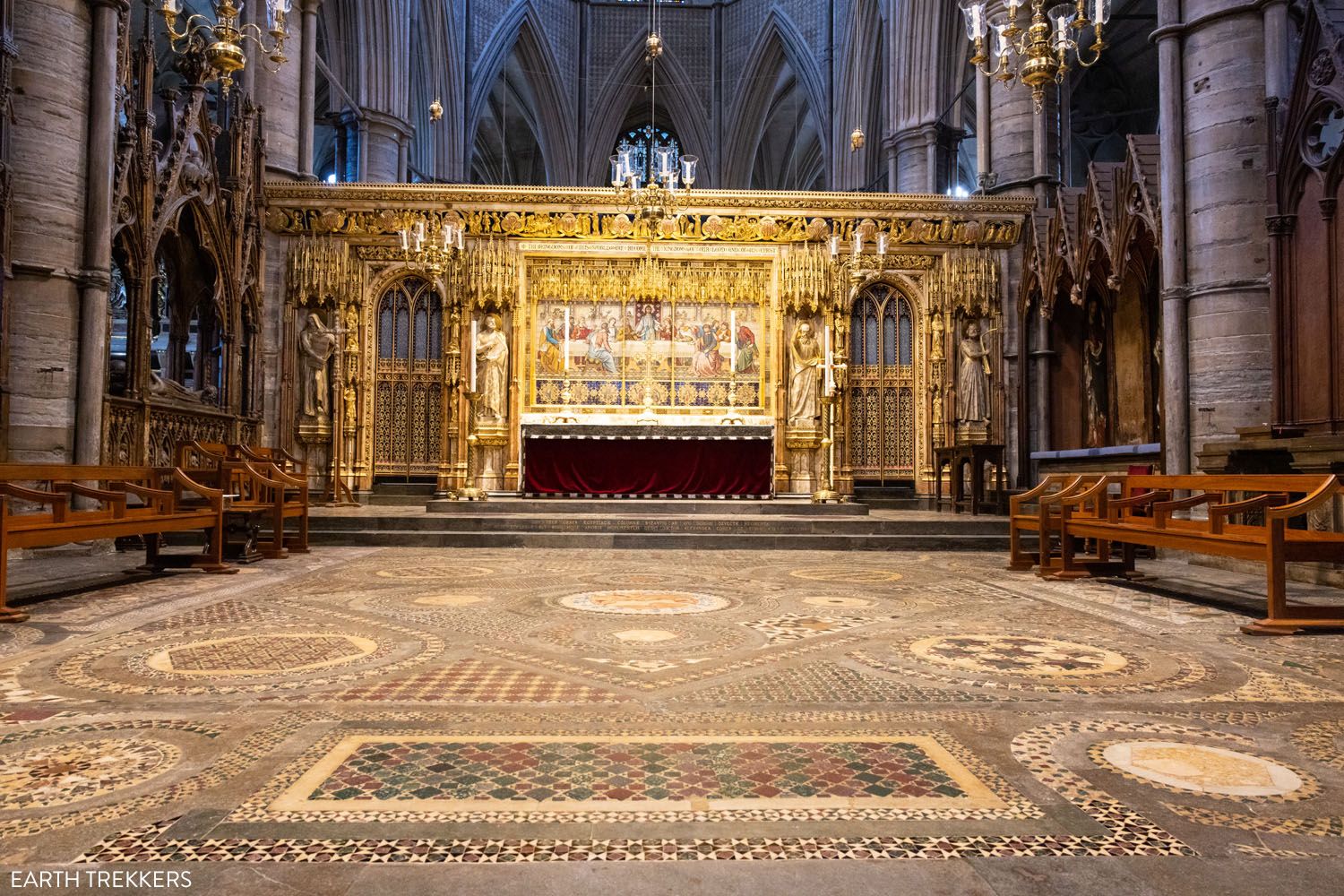
The High Altar and the Cosmati Pavement
Tombs of Kings and Queens
From the viewpoint of the High Altar, you will walk clockwise around the High Altar past the tombs of medieval kings and queens as well as historical figures, such as Captain Cook and St. John the Baptist. Thirty kings and queens are buried in the eastern end of Westminster Abbey, including King Edward the Confessor.
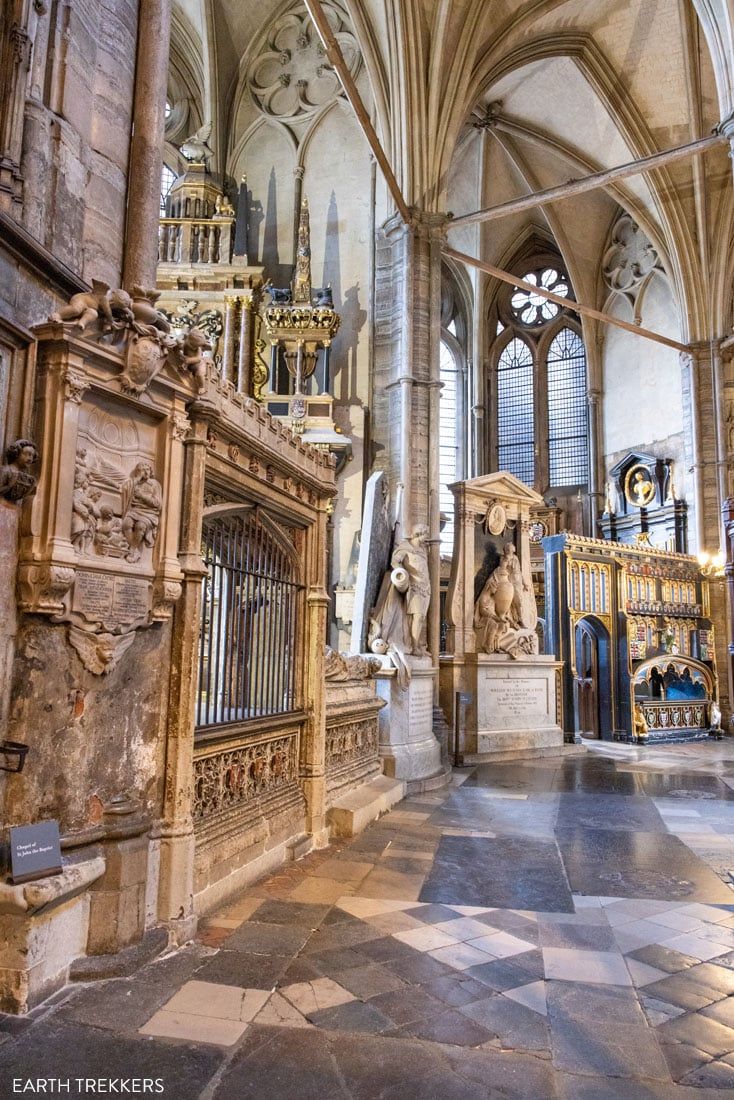


The Henry VII Lady Chapel
Located on the eastern end of the church is one of the most beautiful rooms of Westminster Abbey. This medieval chapel was built by Henry VII between 1503 and 1516. Buried in this chapel are Henry VII, Elizabeth I, Mary I, and Mary Queen of Scots.
Note: The tombs of Mary Queen of Scots, Elizabeth I, and Mary I are located in smaller rooms, off of the main chapel.

Henry VII Lady Chapel

The Royal Air Force Chapel, inside of the Henry VII Lady Chapel

Tombs of Queen Elizabeth 1 and Queen Mary I, in the north aisle of the Lady Chapel
In the south aisle of the Lady Chapel is the tomb of Mary Queen of Scots. Her tomb is the most elaborate in this room and it takes up the center space. On either side of Mary Queen of Scots’ tomb are Lady Margaret Beaufort, the Countess of Richmond (the grandmother of Henry VIII) and Margaret Douglas, the Countess of Lennox (the mother-in-law of Mary Queen of Scots).

Tomb of Lady Margaret Beaufort

The Tomb of Lady Margaret Beaufort is in the foreground and the tomb of Queen Mary of Scots is the larger, more elaborate tomb in the center of the room.

Tomb of Margaret Douglas
More Tombs of Kings and Queens
From the Lady Chapel, you will walk past more rooms containing the tombs of English kings and queens. Just beyond this, in the south transept, you reach Poet’s Corner.

More tombs in Westminster Abbey
For information about the camera gear we carry, take a look at our Travel Photography Gear Guide.
Poet’s Corner
More than 100 writers and poets are buried here, including Charles Dickens, Rudyard Kipling, Geoffrey Chaucer (the first writer to be buried here), George Eliot, and D. H. Lawrence, just to name a few. There is a memorial to William Shakespeare, who is buried at Statford-on-Avon.

Poet’s Corner


Memorials to William Shakespeare and other poets.
The Queen’s Diamond Jubilee Galleries
Access to the Queen’s Diamond Jubilee Galleries requires an additional ticket (£5 per person) but it is the best £5 that you will spend in London.
Entry is next to Poet’s Corner. To get to the Galleries, walk up 108 steps or take the elevator. You will be transported to eastern triforium, which are rooms that were built in 1250 during the reign of Henry III.
The Galleries are filled with historical treasures from the past 1,000 years, including the coronation chair of Queen Mary II (a special chair was made for Mary because she was coronated at the same time as William III), and artifacts from daily life at the abbey.
The best part of the visit to the Queen’s Diamond Jubilee Galleries is the spectacular view of the Nave and the Abbey floor.
From these rooms, you are standing about 3 or 4 stories above the Abbey floor and can look down the entire length of the Nave. The best viewpoint is from the eastern end of the Galleries, where you can look down on the Cosmati pavement and see the Tomb of St. Edward the Confessor, but the Galleries are quite large and offer various viewpoints of the Abbey as you see the exhibits. You also get unique views over Poet’s Corner and St. Margaret’s Church.
In addition to views within the church, the Galleries are lined with windows, so you can also see Parliament and Big Ben.
Next to the windows near the entrance, look for historical graffiti carved into the walls from visitors hundreds of years ago.
I can’t speak highly enough about how wonderful this view is…it was our favorite part of visiting Westminster Abbey. Unfortunately, photos are not permitted, which is why you won’t see any here.
A visit to the Queen’s Diamond Jubilee Galleries lasts 15 to 30 minutes.
INTERESTING FACT: For 700 years, the eastern triforium was the “attic” for Westminster Abbey. It just opened to the public for the first time in 2018.
The Cloisters
The Cloisters are where monks at Westminster Abbey exercised, meditated, and walked between the church and the monastic buildings. The Cloisters lead to the Pyx Chamber, the Chapter House, and the gardens. In the Cloisters, you can also see Britain’s oldest door.


The Cloisters
The Chapter House
Accessible from the East Cloister, the Chapter House was a meeting place for monks. It was built by Henry III in 1246 when he rebuilt the Abbey into what we see today.

The Chapter House
The Pyx Chamber
The Pyx Chamber is one of the oldest parts of Westminster Abbey. Dating back to 1070, this undercroft was used as a monk’s dormitory, a sacristy, and a treasury. Two oak doors from the 14th century stand in the entranceway.

Pyx Chamber

Pyx Chamber Door
Shrines and Gardens
As you continue the walk through the Cloisters, you have the option to visit several more sights, including Little Cloister Garden, St. Catherine’s Chapel Garden, and College Garden.

Little Cloister Garden

St. Catherine’s Chapel Garden

College Garden
King Edward’s Chair
For more than 700 years, this chair was used in the coronation of the kings and queens of England.
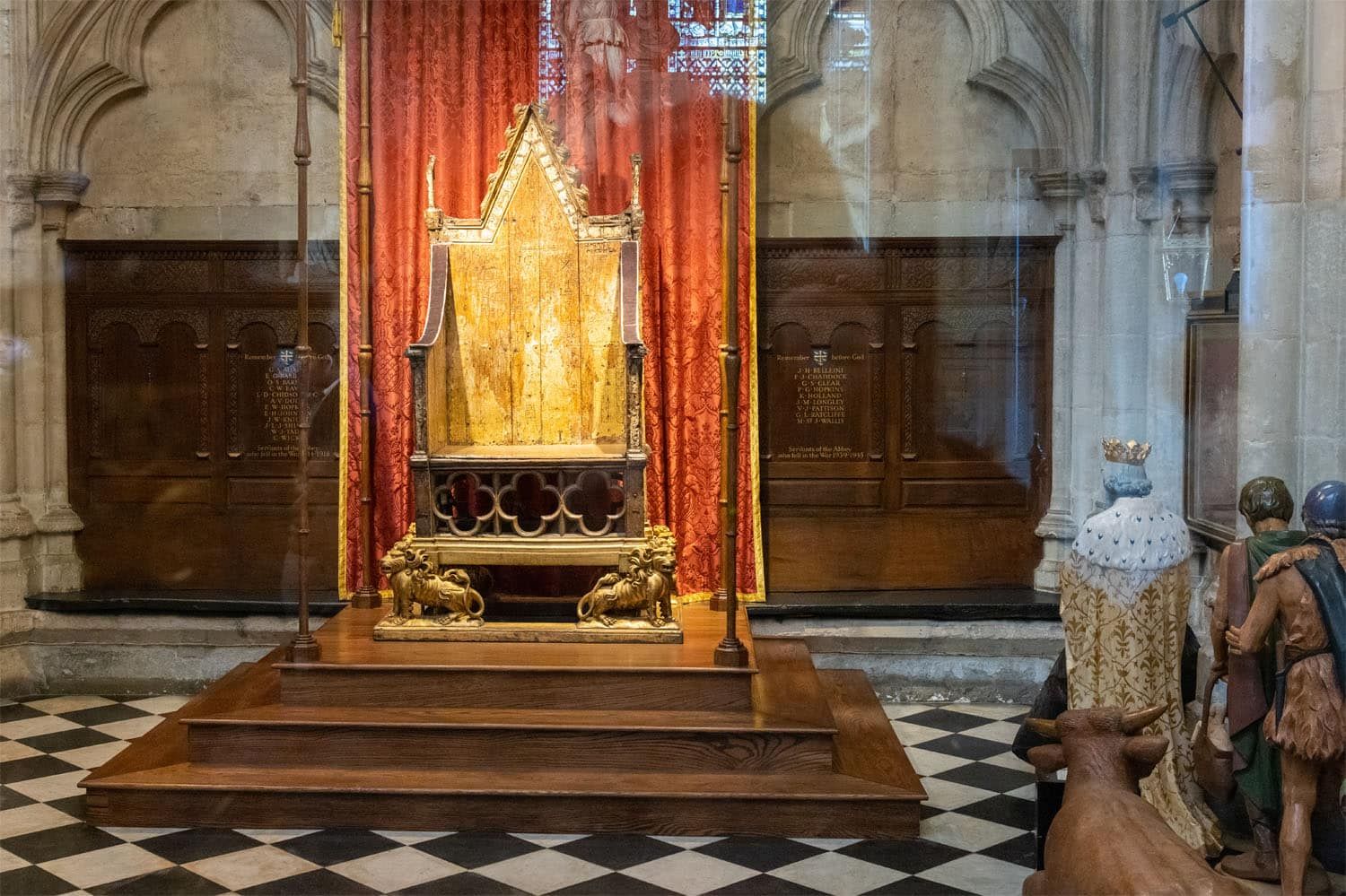
It is placed in front of the High Altar, on the Cosmati Pavement, during a coronation. It was made by order of King Edward I to enclose the Stone of Scone. In 1997, the Coronation Chair was moved to St. George’s Chapel, where we see it today.
The Coronation Chair is the last thing you will see before exiting the Abbey.
How to Get to Westminster Abbey
The closest Underground stations are Westminster (5-minute walk) and St. James’ Park (5-minute walk).
How Much Does it Cost to Visit Westminster Abbey?
Entry Tickets: £30 for adults; children 6 to 17 years £13; children 5 and under are free; Adults 65+ and students £26
An audio guide is included with the entrance fee. It’s well worth it to use the audio guide, as you learn a lot about the chapels, burial sites, and Poet’s Corner.
The Queen’s Diamond Jubilee Galleries has an additional fee of £5, children 17 and under are free.
PRO TRAVEL TIP: Purchase your tickets online in advance to avoid waiting in line.
You have the option to take a verger tour, in which you see the main sights plus some places you are permitted to visit only with a guide, such as the Tomb of St. Edward the Confessor. These tours last 90 minutes and cost £10 per person (in addition to the entrance fee). Learn more here.
Get updated pricing on the official website.

When Does Westminster Abbey Open?
Westminster Abbey is open from Monday through Friday, 9:30 am to 4:30 pm, on Saturdays from 9:00 am to 4:00 pm, last entrance one hour before closing. On Sundays, Westminster Abbey is only open for mass and services.
The Queen’s Diamond Jubilee Galleries, which are a separate section of the Abbey that requires an additional ticket, are open from 10:00 am to 4:00 pm on weekdays, 9:30 am to 3:30 pm on Saturdays.
Since this is a working church, hours can change without notice. We experienced this, arriving at 1 pm on a Tuesday, only to learn that the Abbey was closed to visitors.
Get updated hours on the official website.
Best Time of Day to Visit Westminster Abbey
If you want to see Westminster Abbey with low crowds, purchase a ticket for the first time slot (9:30 am) and arrive early to be one of the first in line.
Purchase your ticket online in advance so you do not have to wait in the ticket line. In the morning, right before opening, the officials will form two lines: those with tickets and those without tickets. If you have a ticket, you will enter Westminster Abbey first. Those without tickets then have to wait to purchase their ticket before entering.
We arrived at 9:15 am and were one of the first people in line. Tim purchased our tickets online the day before our visit.
To get photos without people in them, I did have to move a little faster through the church then I wanted to, to stay ahead of everyone. However, this was my second visit to Westminster Abbey and for me (and for the website) it was worth it for these photos.
Westminster Abbey has peak crowds between 11 am and 2 pm. To visit with fewer crowds, you can also time your visit for the end of the day, around 2:30 pm.

Henry VII Lady Chapel
Skip the Line Tours of Westminster Abbey
On this tour, take a guided tour of Westminster Abbey with the option to add on the Houses of Parliament.
This 2-hour tour starts at opening time and includes an experienced guide.
This tour takes you to 20 of the most popular sights in London and includes a visit to Westminster Abbey.
Helpful Tips for Westminster Abbey
Dress Code
There is no official dress code for visiting Westminster Abbey, but they do request that visitors dress conservatively and that men remove hats while in the Abbey.
Backpacks and Luggage
Suitcases and large backpacks are not permitted inside Westminster Abbey. There are no luggage facilities so plan accordingly before visiting the Abbey.
What to Do after Your Visit
All of these are within walking distance of Westminster Abbey:
- Walk over to Buckingham Palace to see the Changing of the Guard
- Take a stroll through St. James’s Park
- Visit the Churchill War Rooms
- Walk across Westminster Bridge and ride the London Eye
Frequently Asked Questions
What’s not to miss at Westminster Abbey?
Here are the top 7 things to do at Westminster Abbey:
- Poet’s Corner
- The Quire
- See the High Altar and Cosmati Pavement
- Visit the Queen’s Diamond Jubilee Galleries
- See King Edward’s Chair
- Visit the Henry VII Lady Chamber
- See the Royal Tombs
How much time do you need at Westminster Abbey?
To visit the Nave, tombs, Poet’s Corner, and Queen’s Diamond Jubilee Galleries, give yourself 1.5 to 2 hours. You can visit Westminster Abbey much faster than this, but you will have to skip a few chapels or move very quickly.
Is Westminster Abbey worth it?
With its burial sites for kings, queens, writers, and scientists, its long, rich history, and its importance as a coronation site for English and British monarchs, Westminster Abbey is one of the most awe-inspiring churches in the world to visit. It is also one of London’s most famous landmarks and can’t be missed on a visit to London.
Is Westminster Abbey included on the London Pass?
Yes, Westminster Abbey is included on the London Pass. In order to visit the Queen’s Diamond Jubilee Galleries, you will have to pay the additional fee of £5.
If you have any questions about how to visit Westminster Abbey, let us know in the comment section below.
More Information for Your Trip to London






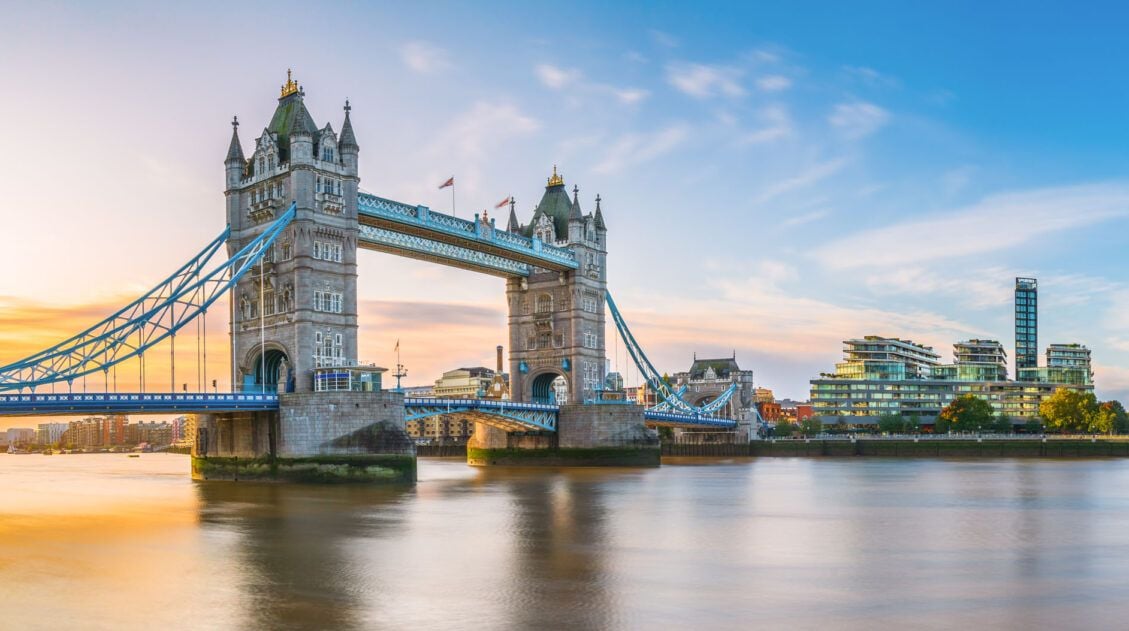


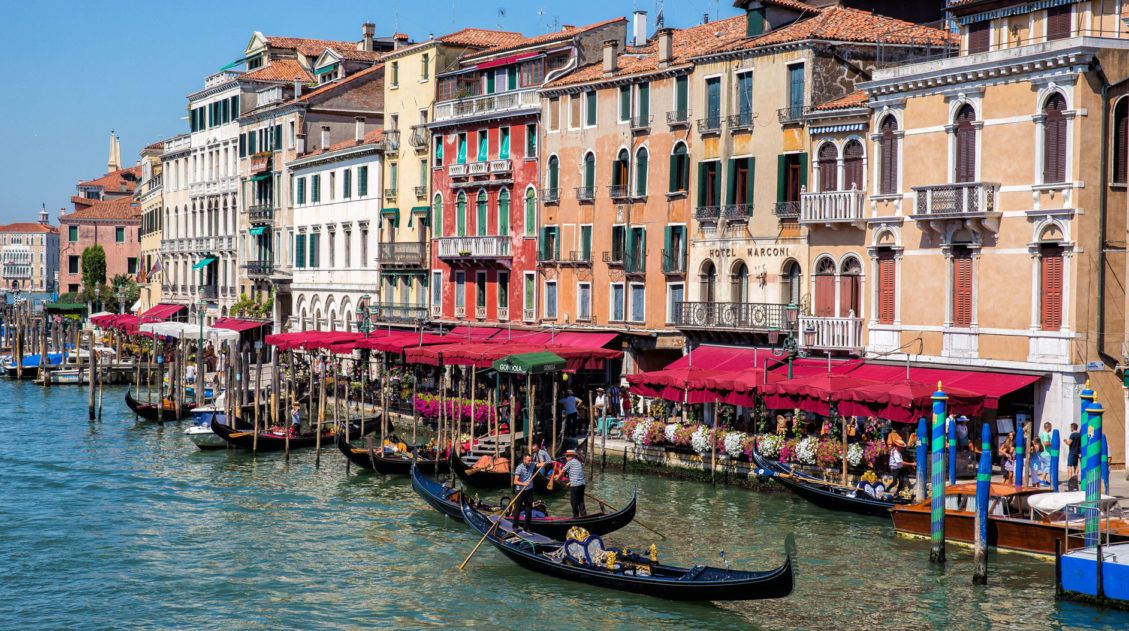


Comments 8